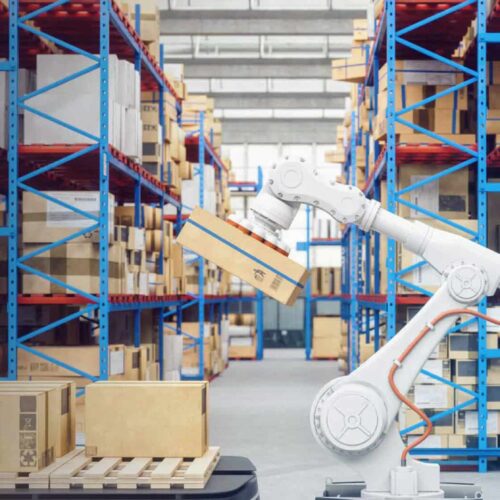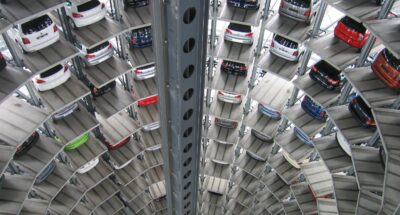
Carbon accounting: learnings from the governance journey
How companies understand their sustainability-related governance may hold the key to meeting climate goals and thriving in a net-zero economy ...

by Carlos Cordon Published 24 May 2023 in Supply chain • 6 min read
As multinational corporations try to cut their carbon emissions and tackle other social ills, they are coming under pressure to take a closer look at every link in the supply chain – which is now at the forefront of efforts to green the global economy. That means assessing the environmental, social, and governance (ESG) credentials of suppliers, which can number in the tens of thousands for a large group like Unilever.
Properly addressing supply-chain risk is, therefore, a mammoth organizational challenge. The three-decade march of globalization has created sprawling value chains that cross multiple continents. Further, those operations will be spread across parts of the world where data is hard to come by, and where the legal and regulatory regime may be far below European standards.
But try you must. In some jurisdictions, supply-chain visibility is now being mandated by lawmakers. Germany, for one, is handing out fines of up to €8m for larger companies that fail to check whether their suppliers are abusing human rights.
The dangers of failing to carry out proper due diligence all the way along the chain have been illustrated by tragedies in the garment industry, including the Rana Plaza factory collapse in Bangladesh in which more than 1,100 workers perished. This underscores the legal, commercial, and reputational risk for companies that fail to ask tough questions of their suppliers.

Develop a digital supply chain management strategy that embeds the right technologies for your business.
The need to carry out proper due diligence is further amplified by the importance of tackling Scope 3 emissions, the greenhouse gases that are emitted along the supply chain and in products or services. In contrast with direct emissions from, say, offices and travel, Scope 3 emissions typically account for the bulk of any company’s carbon footprint. But they are the hardest to measure.
For big multinationals, the first step is often to track down the data on the carbon footprints, biodiversity impacts, and working conditions of suppliers. The sheer scale of the exercise can be daunting, especially for a large corporation. But there are some reputable data providers, such as MSCI, Sustainalytics, Moody’s Vigeo, and S&P Global Trucost that can help provide the needed information.

Even so, some smaller suppliers simply don’t have the resources or expertise to report on their ESG performance, meaning that it can become necessary to produce estimates, creating uncertainty in locating the exact numbers.
The lack of data reliability means that some well-intentioned organizations are afraid of reporting on the impact of their supply chains for fear of being accused of greenwashing. This is the case even when they appear to be performing well on ESG metrics. Part of the problem is the thicket of different reporting frameworks, sowing confusion. A gold standard would go a long way to assuaging concerns over greenwashing.
Technology can also help. For example, some companies are using satellite imagery to measure emissions at their source, while the rise of digitised supply-chain management, which integrates internal systems with external data, is delivering better insights along the chain. Corporations should continue to make investments in such digital technologies to improve visibility.
Of course, some will feel the behaviour of suppliers is outside their direct control, but there are ways to spread influence, through either a carrot or stick approach. Some companies simply ask their suppliers to curb emissions, while others offer financial incentives for them to do so. For instance, the US state of California provides incentives for dairy farmers that convert methane into energy by enabling them to sell carbon offset credits. That’s the carrot.
Meanwhile, some companies blacklist suppliers that fail to meet their standards, to de-risk their supply chain. That’s the stick. But a more pragmatic approach is to work with suppliers, leveraging the vast resources of your organization to help them clean up their act. It may be financially less appealing, but those smaller vendors are going to be vital to solving bigger sustainability problems.
Apple knows this. That’s why the iPhone maker has called on all its suppliers to decarbonize their operations by 2030. It also offers them free training sessions focused on using clean power, like wind or solar, for production. This knock-on effect shows how greater supply-chain visibility can be a powerful tool for cascading action down through the economy.

Another step that companies can take is to move towards vertical integration, owning more of their entire supply chain to not only smooth disruptions but raise standards to. This is the classic make or buy choice; for many companies, the former is going to give them more direct control over their environmental and social impact.
More than anything, though, properly addressing supply-chain risk will require a culture change inside supply-chain departments. In the past, companies have tended to focus more on their biggest, direct suppliers – the “tier ones”, such as Foxconn, that send Apple finished iPhones.
But that leaves a blind spot. They are going to need to change strategy, and significantly ramp up resources and capabilities, to be able to probe the “tier twos” and those further down the value chain who produce components.
That will ultimately be more costly, but if there is one silver lining, it’s that the COVID-19 pandemic and Russia’s invasion of Ukraine have already forced corporations to take a closer look at their suppliers to shore up vulnerabilities.
Those two geopolitical shocks exposed the weaknesses in long, lean operations. Not only are they prone to costly disruptions, but they often prioritize efficiency in terms of delivery times and cost – with little regard to the social and environmental risks.
Now, many companies are looking at having more regional supply chains to improve the resilience of supply, but the added benefit should be a lower carbon footprint. The bigger lesson of all this, though, is that suppliers are ultimately the greatest lever that big companies can pull to tackle their negative externalities.

Professor of Strategy and Supply Chain Management
Carlos Cordon is a Professor of Strategy and Supply Chain Management. Professor Cordon’s areas of interest are digital value chains, supply and demand chain management, digital lean, and process management.

Develop a digital supply chain management strategy that embeds the right technologies for your business.

16 November 2023 • by Ralf W. Seifert, Richard Markoff, Alexander Schmidt in Supply chain
How companies understand their sustainability-related governance may hold the key to meeting climate goals and thriving in a net-zero economy ...

14 November 2023 in Supply chain
Henrik Andersen discusses with IMD President Jean-François Manzoni the challenges of navigating supply chain disruptions and soaring raw material costs over the past three years, and why he changed the wind farm...

7 November 2023 • by Mark J. Greeven, Patrick Reinmoeller in Supply chain
Li Shufu, CEO and founder of Chinese carmaker Geely, overcame a host of setbacks to become the billionaire owner of a multi-faceted business ...

4 October 2023 • by Carlos Cordon in Supply chain
De-risking strategies, sustainability considerations, and geopolitical awareness will play pivotal roles in reshaping how businesses operate in the years to come....
Explore first person business intelligence from top minds curated for a global executive audience